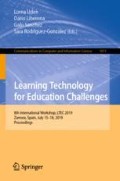Abstract
Traditional tandem language learning (involving two students learning each other’s mother tongue) is not a new concept. In fact, it has long been practiced in foreign language classrooms. However, a tandem approach involving learners of different countries using social media is something that has not been fully understood. Theoretically speaking, language acquisition occurs when rich comprehensible input is provided to language learners. Unfortunately, not all language learning contexts can provide this vital input, primarily owing to an inadequate language proficiency level of both teachers and students. In fact, this situation is not uncommon in the English as a Foreign Language (hereafter EFL) context. As a result, foreign language learning is hampered or impeded and little learning can occur, if at all. This paper argues that employing a telecollaborative social media-based tandem language learning approach could help to provide the missing input. With this approach, language learners of different linguistic backgrounds (i.e. native English speakers learning Indonesian and native Indonesian speakers learning English) work collaboratively using social media and assist one another in their learning - following the principle of mutual benefit and reciprocity. Teachers of both groups work together to design learning activities for the students with the aim being to provide ample opportunity for language learners to interact with native speakers of the target language and receive comprehensible input accordingly. Thus, a tandem approach by means of social media, such as Facebook, could help provide input critical to foreign language learning at times when input from the language learning environment is so inadequate. More importantly, a tandem language learning approach is compatible with and attuned to contemporary language learning theories such as Language Acquisition Theory and Constructivism. Finally, a tandem approach also promotes a fruitful collaboration among a wide array of educational institutions worldwide which, in turn, foster an international collaboration and networking.
Access this chapter
Tax calculation will be finalised at checkout
Purchases are for personal use only
References
Alberth, A.: Technology-enhanced teaching: a revolutionary approach to teaching English as a foreign language. TEFLIN 24(1), 1–13 (2013)
Little, D., Ushioda, E.: Designing, implementing and evaluating a project in tandem language learning via e-mail. ReCALL 10(1), 95–101 (1998)
John, N.A.: Sharing and Web 2.0: the emergence of a keyword. New Media Soc. 15(2), 167–182 (2013)
Krashen, S.D.: The Input Hypothesis: Issues and Implications. Longman, London (1985)
Swain, M.: Three functions of output in second language learning. In: Cook, G., Seidhofer, G. (eds.) Principles and Practices in Applied Linguistics: Studies in Honor of H.G. Widdowson. Oxford University Press, Oxford (1995)
Gass, S.M., Varonis, E.M.: Variation in native speaker speech modification to non-native speakers. Stud. Second Lang. Acquisition 7, 37–58 (1985)
Cziko, G.A.: Electronic tandem language learning (eTandem): a third approach to second language learning for the 21st Century. CALICO J. 22(1), 25–39 (2004)
Grosseck, G., Bran, R., Tiru, L.: Dear teacher, what should I write on my wall? A case study on academic uses of Facebook. Proc. Soc. Behav. Sci. 15, 1425–1430 (2011)
Chartrand, R.: Social networking for language learners: creating meaningful output with Web 2.0 tools. Knowl. Manag. E-Learn. Int. J. 4(1), 97–101 (2012)
Godwin-Jones, B.: Emerging technologies: web-writing 2.0: enabling, documenting, and assessing writing online. Lang. Learn. Technol. 12(2), 7–13 (2008)
Kabilan, M.K., Ahmad, N., Abidin, M.J.Z.: Facebook: an online environment for learning of English in institutions of higher education? Internet High. Educ. 13, 179–187 (2010)
Reinhardt, J., Zander, V.: Social networking in an intensive English program classroom: a language socialization perspective. CALICO J. 28(28), 326–344 (2011)
Allen, K.: Online learning: constructivism and conversation as an approach to learning. Innov. Educ. Teach. Int. 42(3), 247–256 (2005)
Boudourides, M.A.: Constructivism, education, science, and technology. Can. J. Learn. Technol. 29(3) (2003)
Schcolnik, M., Kol, S., Abarbanel, J.: Constructivism in theory and in practice. Engl. Teach. Forum 4, 12–20 (2006)
Alberth: How effective are technology-enhanced teaching techniques in the EFL classroom? Curtin University of Technology, Perth (2012)
Freiermuth, M.R.: Native speakers or non-native speakers: who has the floor? Online and face-to-face interaction in culturally mixed small groups. Comput. Assist. Lang. Learn. 14(2), 169–199 (2001)
Felix, U.: The Web as a vehicle for constructivist approaches in language teaching. ReCALL 14(1), 2–15 (2002)
Madge, C., Meek, J., Wellens, J., Hooley, T.: “Facebook”, social integration and informal learning at university: “It is more for socialising and talking to friends about work than for actually doing work”. Learn. Media Technol. 34(2), 141–155 (2009)
Pempek, T.A., Yermolayeva, Y.A., Calvert, S.L.: College students’ social networking experiences on Facebook. J. Appl. Abilityal Psychol. 30(3), 227–238 (2009)
Eaton, S.E.: Global Trends in Language Learning in The Twenty-First Century. Onate Press, Calgary (2010)
Author information
Authors and Affiliations
Corresponding author
Editor information
Editors and Affiliations
Rights and permissions
Copyright information
© 2019 Springer Nature Switzerland AG
About this paper
Cite this paper
Alberth, Wang, Y., Wang, W.Y.C. (2019). Fostering Foreign Language Learning Through a Telecollaborative Social Media-Based Tandem Language Learning Approach. In: Uden, L., Liberona, D., Sanchez, G., Rodríguez-González, S. (eds) Learning Technology for Education Challenges. LTEC 2019. Communications in Computer and Information Science, vol 1011. Springer, Cham. https://doi.org/10.1007/978-3-030-20798-4_31
Download citation
DOI: https://doi.org/10.1007/978-3-030-20798-4_31
Published:
Publisher Name: Springer, Cham
Print ISBN: 978-3-030-20797-7
Online ISBN: 978-3-030-20798-4
eBook Packages: Computer ScienceComputer Science (R0)

